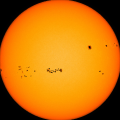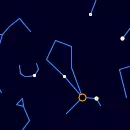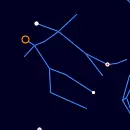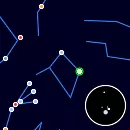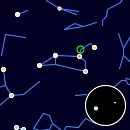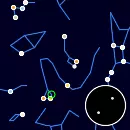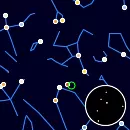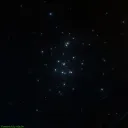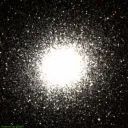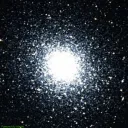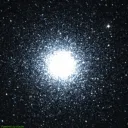Sky Tonight
Whether you're using just your eyes, binoculars, or a telescope, the night sky offers endless wonders waiting to be discovered. Happy stargazing!Sky Map
Celectial bearing and elevation at 02:47
This skymap is a dynamic visualization that displays the positions of celestial objets in the night sky for your specific location on the current date. It allows you to interactively explore the celestial landscape by moving it horizontally, enabling you to preview how the arrangement of stars will change as the night progresses.
Celestial Delights for Your Night Sky Adventure
Tonight's celestial wonders are ready to amaze and inspire. Here's a brief list of what you can explore:
Solar System Objects
Moon
Waxing Gibbous (99%)
The Moon exhibits a stunning array of craters, mountains, and lunar maria, showcasing its rugged and varied surface in intricate detail, with phases changing as it orbits Earth.
Planets
See which planets are currently visible, along with their rise and set times, to help you plan your observations.
Active Meteor Showers
Quadrantids
Meteor Shower
Quadrantids meteor shower is an annual event that peaks on January 03, with activity occurring from December 31 to January 10.
For a complete list of meteor showers, go to our Active Meteor Showers page.
Satellite Flyovers
A short list of upcoming brightest satellite flyovers.
No bright satellite flyovers are expected in the next hour.
To view the complete list, visit our Satellites page.
Brightest Stars
Check out the five brightest stars currently visible in the night sky.
Arcturus
Star
Arcturus, the fourth brightest star, is an orange giant in the constellation Boötes. Its distinctive hue and brightness make it easily recognizable in the night sky.
Spica
Star
Spica is a binary star system located in the constellation Virgo. It is one of the brightest stars in the night sky and plays a significant role in many celestial navigational systems.
Pollux
Star
Pollux is part of the Gemini twins, a bright yellow-orange giant star. It is one of the two brightest stars in the constellation Gemini, easily visible to the naked eye.
Regulus
Star
Regulus is a prominent star in the constellation Leo, known for its bluish-white color and brightness. It is the brightest star in Leo and one of the brightest stars in the night sky.
Castor
Star
Castor is part of the Gemini twins, forming a binary star system. It is one of the brightest stars in the constellation Gemini and is easily visible to the naked eye.
If you've enjoyed learning about these five stunning celestial wonders, don't miss out on exploring our list of the brightest stars in the night sky
Double Stars
Discover the brightest double stars currently visible in the night sky.
14509-1603
Multiple Star System
8-star star system in the constellation Libra with primary and secondary components of magnitudes 3.30 and 5.19, separated by 3.8 arcminutes.
10167+2325
Triple Star System
Triple star system in the constellation Leo with primary and secondary components of magnitudes 3.46 and 6.03, separated by 5.2 arcminutes.
17322+5511
Double Star
Double star system in the constellation Draco with primary and secondary components of magnitudes 4.87 and 4.90, separated by 1.2 arcminute.
13101+3830
Triple Star System
Triple star system in the constellation Canes Venatici with primary and secondary components of magnitudes 5.95 and 6.26, separated by 4.8 arcminutes.
17037+1336
Multiple Star System
6-star star system in the constellation Hercules with primary and secondary components of magnitudes 5.91 and 6.17, separated by 4.9 arcminutes.
Nebulae
Discover the brightest nebulae currently visible in the night sky.
Beehive (M44)
Open Cluster
The Beehive Cluster, an open star cluster containing over 1,000 stars, located approximately 577 light-years away in the constellation Cancer.
Hercules Globular Cluster (M13)
Globular Cluster
The Great Hercules Cluster, a large globular cluster containing several hundred thousand stars, located in the constellation Hercules.
M5
Globular Cluster
A large globular cluster containing several hundred thousand stars, located in the constellation Serpens.
M3
Globular Cluster
A spectacular globular cluster containing approximately 500,000 stars, situated in the constellation Canes Venatici.
M92
Globular Cluster
Globular cluster one of the oldest clusters known, contains high metallicity stars.
For a complete list of nebulae visible tonight, go to our Nebulae Page. There, you'll find detailed information on each nebula, including its location, brightness and photos.

